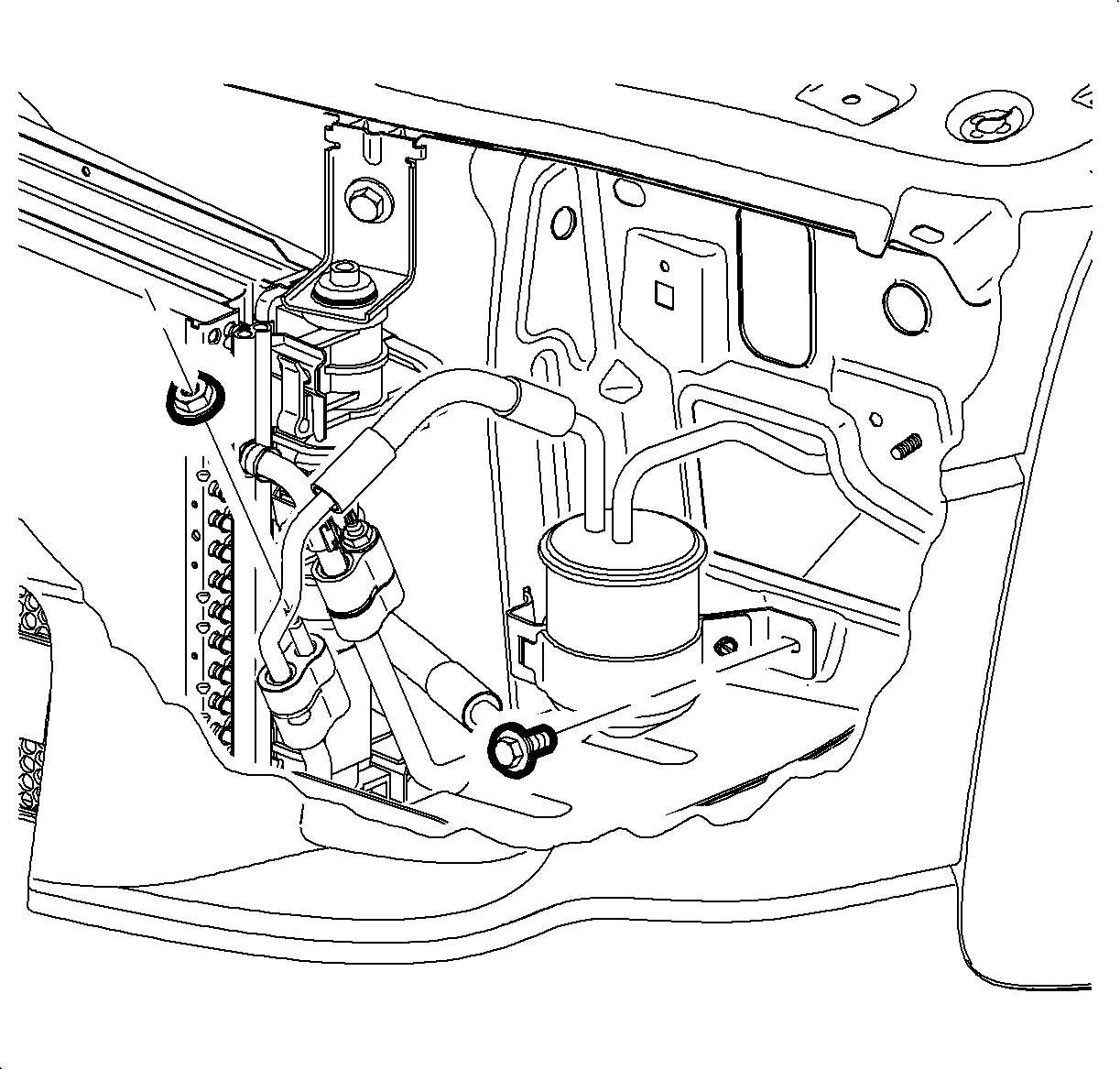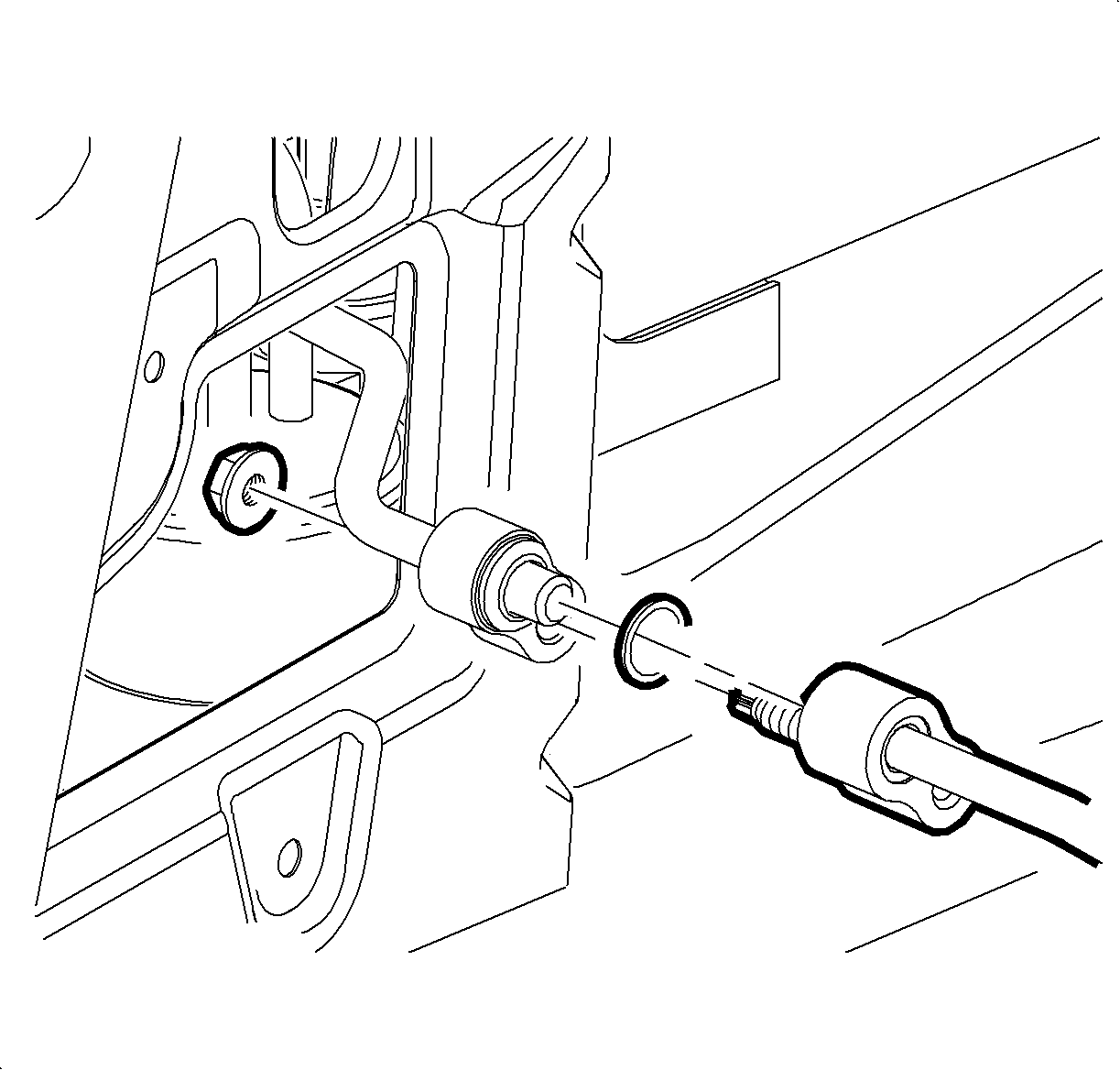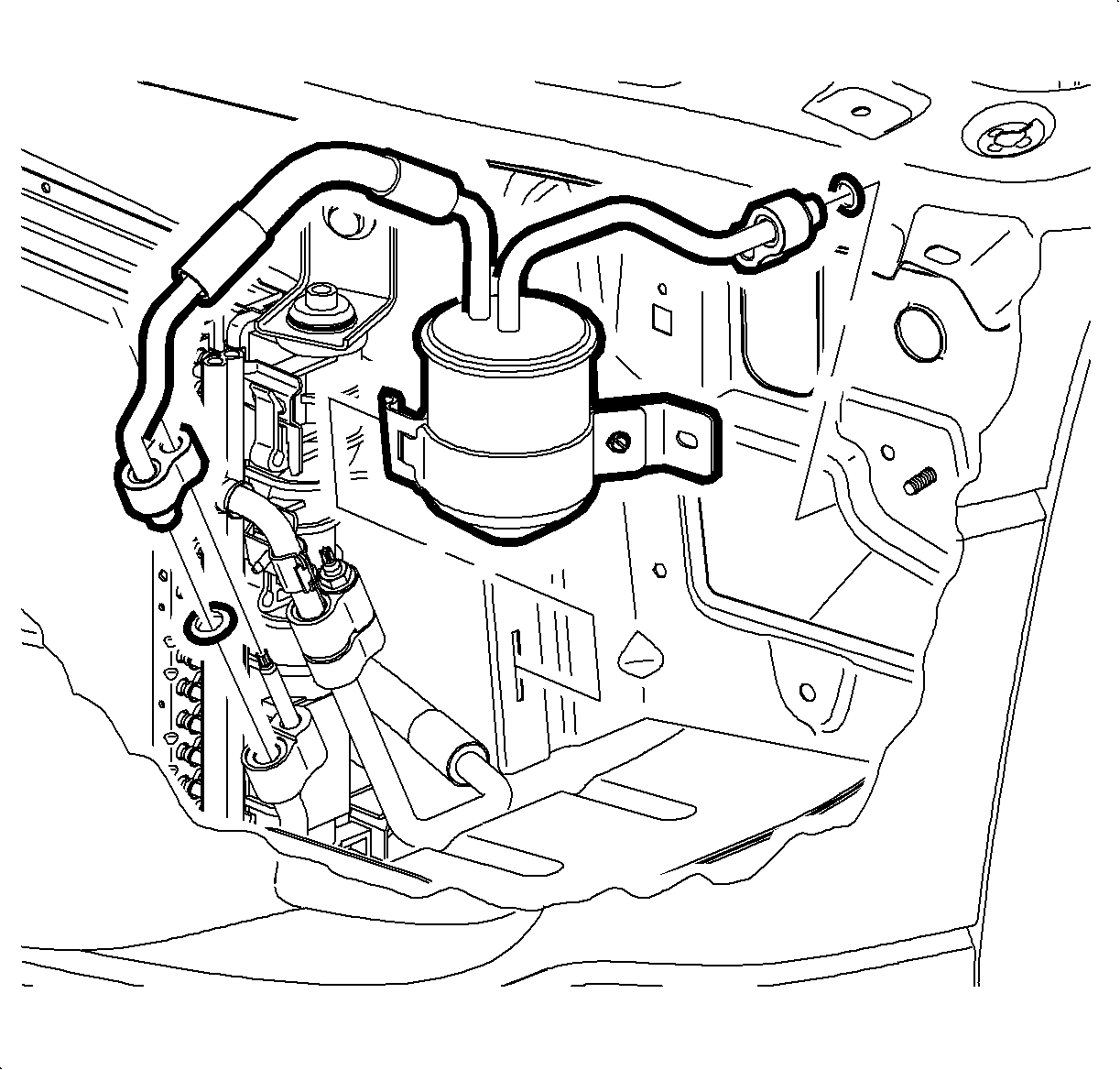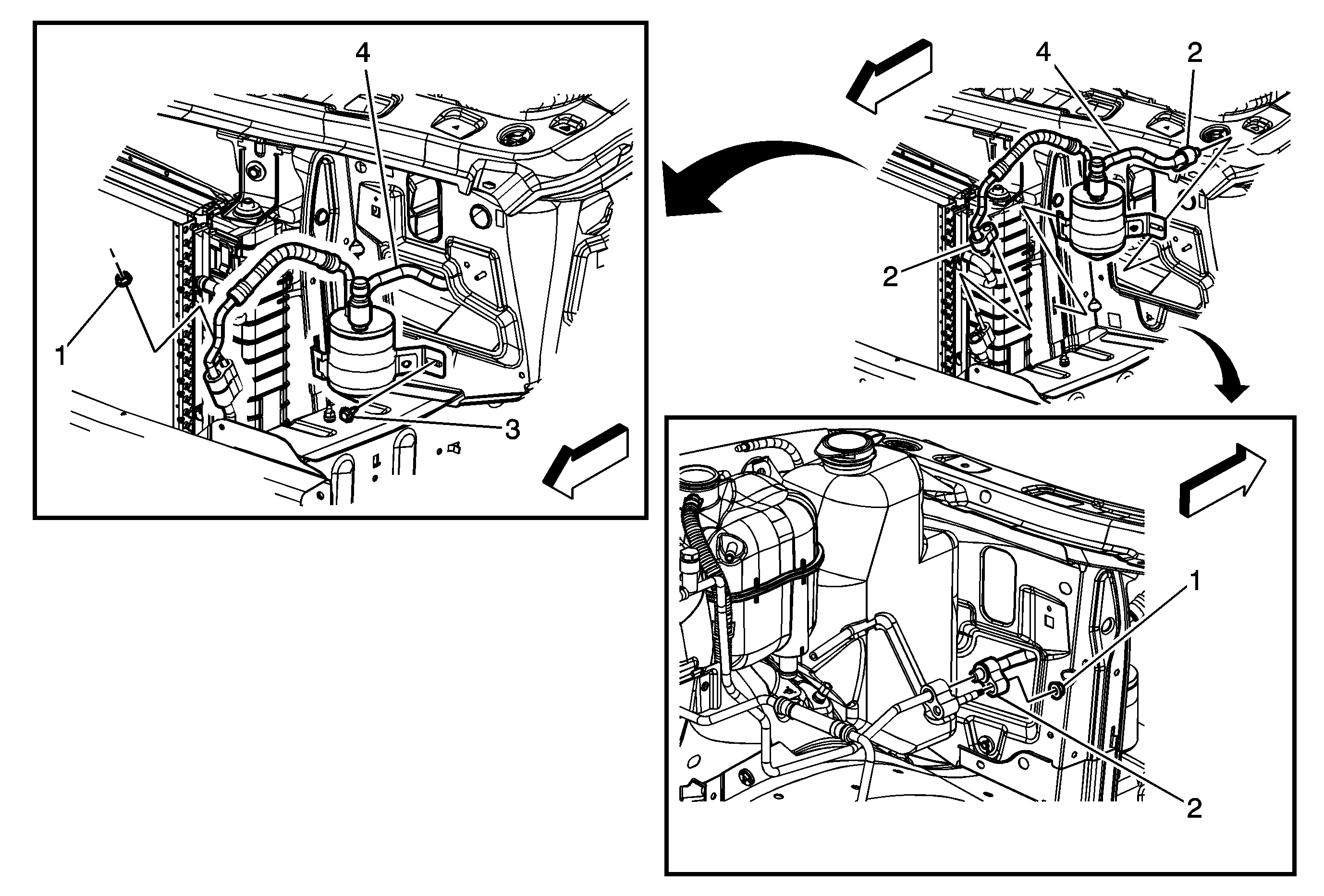Receiver and Dehydrator Replacement L61/L66
Tools Required
J 39400-A Halogen Leak Detector
Removal Procedure
- Recover the refrigerant. Refer to Refrigerant Recovery and Recharging .
- Remove the left headlamp assembly. Refer to Headlamp Assembly or Headlamp Bulb and/or Cornering, Sidemarker, Park, Turn Signal Bulb Replacement .
- Remove the receiver dehydrator nut from the condenser.
- Remove the receiver dehydrator nut from the liquid line.
- Remove the receiver dehydrator bracket bolt from the vehicle.
- Remove the receiver dehydrator from the vehicle.
- Install protective caps to the condenser, the liquid line, and the receiver dehydrator to prevent contamination and desiccant saturation.

Important: Use a large pair of pliers to hold the fitting. Be careful not to twist the line.

Important: Use a large pair of pliers to hold the fitting. Be careful not to twist the line.


Installation Procedure
- Remove the protective caps from the condenser, the liquid line, and the receiver dehydrator.
- Add the specified amount of polyalkylene glycol (PAG) oil to the receiver dehydrator. Refer to Refrigerant System Capacities .
- Install new seal washers to the receiver dehydrator. Refer to Sealing Washer Replacement .
- Install the receiver dehydrator to the vehicle.
- Install the receiver dehydrator nut to the liquid line.
- Install the receiver dehydrator nut to the condenser.
- Position the receiver dehydrator in the vehicle.
- Install the receiver dehydrator nut to the vehicle.
- Install left head lamp. Refer to Headlamp Assembly or Headlamp Bulb and/or Cornering, Sidemarker, Park, Turn Signal Bulb Replacement .
- Evacuate and charge the A/C system. Refer to Refrigerant Recovery and Recharging .
- Test the affected A/C joints for leaks using J 39400-A .


Notice: Use the correct fastener in the correct location. Replacement fasteners must be the correct part number for that application. Fasteners requiring replacement or fasteners requiring the use of thread locking compound or sealant are identified in the service procedure. Do not use paints, lubricants, or corrosion inhibitors on fasteners or fastener joint surfaces unless specified. These coatings affect fastener torque and joint clamping force and may damage the fastener. Use the correct tightening sequence and specifications when installing fasteners in order to avoid damage to parts and systems.
Important: Use a large pair of pliers to hold the fitting. Be careful not to twist the line.
Tighten
Tighten the nut to 16 N·m (12 lb ft).

Important: Use a large pair of pliers to hold the fitting. Be careful not to twist the line.
Tighten
Tighten the nut to 16 N·m (12 lb ft).
Tighten
Tighten the bolt to 10 N·m (89 lb in).
Receiver and Dehydrator Replacement LAT

Callout | Component Name | ||||||||
|---|---|---|---|---|---|---|---|---|---|
Preliminary Procedure
| |||||||||
1 | Receiver Dehydrator Nut from condenser and the liquid line (Qty: 2) Notice: Refer to Fastener Notice in the Preface section. ProcedureSecure fittings before removing attaching nuts Tighten | ||||||||
2 | Receiver Dehydrator Fitting (Qty: 2) Procedure
| ||||||||
3 | Receiver Dehydrator Bracket Bolt (Qty: 1) Tighten | ||||||||
4 | Receiver Dehydrator Procedure
Special Tools | ||||||||
